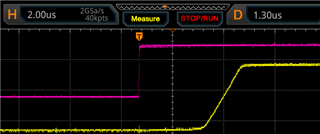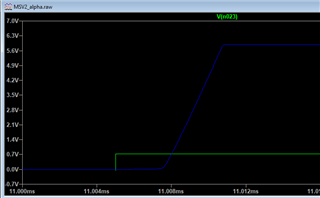Is there any guarantee about a minimal recovery time after saturation?
We are developing a product in which the design relies on a having a delay of at least 1μs.
On our prototype, the delay due to saturation recovery time is 2.5μs. This closely matches the simulation.
Will this delay always be there if the opamp is saturated? In what range can we expect this delay to be?

-
Ask a related question
What is a related question?A related question is a question created from another question. When the related question is created, it will be automatically linked to the original question.

